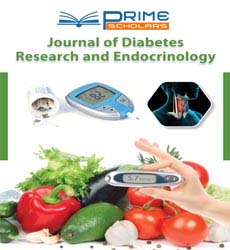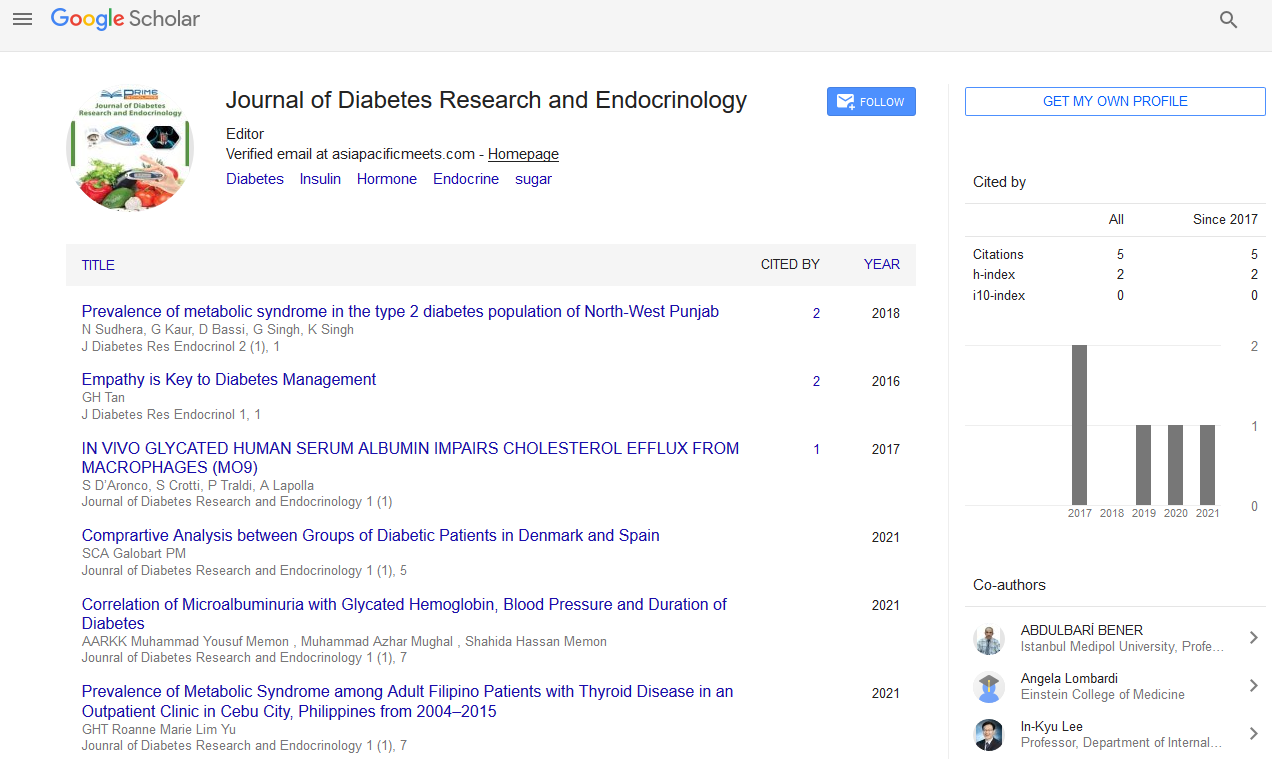Wei Tang*
Department of Metabolism and Endocrinology, The First People’s Hospital of Huaihua, Huaihua Hunan, China
- *Corresponding Author:
- Wei Tang
Department of Metabolism and Endocrinology,
The First People’s Hospital of Huaihua,
Huaihua Hunan,
China,
Email: wei.tang_nfm@csu.edu.cn
Received Date: August 02, 2021 Accepted Date: August 16, 2021 Published Date: August 23, 2021
Citation: Tang W (2021) Antigen‐Reactive T cells and Autoantibodies. J Diabetes Res Endocrinol. Vol.5 No 4:e002.
Description
Type 1 diabetes mellitus is considered as a T cell-mediated
immune system illness. Not with standing, the assurance of
immune system status in type 1 diabetes mellitus depends on
autoantibodies clinically, which can be missing on account of
idiopathic sort 1 diabetes. In the current examination, islet
antigen‐reactive T-cell measure in mix with Abs recognition
could work on the analytic affectability of immune system
diabetes.
Type 1 diabetes mellitus, in the strict sense, should be
diagnosed as autoimmune diabetes rather than idiopathic type 1
diabetes mellitus, and might obtain additional benefits from
immune therapy; for example, islet function preservation.
Unfortunately, the lack of follow up precluded us from
identifying the effect of T-cell reactivity on the progressive β-cell
dysfunction in type 1 diabetes mellitus patients. In addition,
other limitations to the present study include the relatively small
sample size. Therefore, further prospective studies with larger
sample size are required for confirmation in the future.
Epitope information withouht uman leukocyte antigen
restriction, significantly xepanding the testing population.
Furthermore, the combinatorial detection of two islet antigensspecific
T cells might further increase the sensitivity. In the
present study, we detected interferon (IFN)-γ‐secreting T-cell
responses to antigen GAD65a nd CP by enzyme-linked
immunospot (ELISPOT) assay, and investigated the diagnostic
value of combined assay of islet antigen‐reactive T cells and Abs
for immunophenotyping in type 1 diabetes mellitus.
Positive control tetanus toxoid (Sanofi, Marcy-l'Étoile, France;
1 μg/mL) were added in duplicate wells. Peripheral blood mononuclear cells were resuspended with an AIM-V medium
(Invitrogen, Carlsbad, CA, USA) containing recombinant human
interleukin-2 (R&D, Minneapolis, MN, USA; 2.5 U/mL), seeded at
cells/well and cultured at 370C for 40–48 h. IFN-γ secretion was
visualized with biotinylated anti‐IFN‐γ detection Ab (U-CyTech),
ExtrAvidin-Alkaline Phosphatase (Sigma) and color developer
NBT-BCIP tablets (Roche, Mannheim, Germany). Spots were
automatically ocunted yb an ELISPOT plate reader (CTL,
Cleveland, OH, USA). A stimulation index (SI) was calculated as
the ratio of mean value of spots in experimental wells divided by
the mean value of spots in negative control wells.
Continuous data are expressed as the mean ± standard
deviation, median (25th percentile to 75th percentile) or as
indicated. Categorical variables are presented as the number or
percentage. Comparison between groups was carried out with
an independent Student’s t-test if their normality were not
rejected, or the Mann-Whitney U-test was used otherwise. The
χ2-test was carried out to compare categorical data. Spearman
rank correlation analysis was carried out to explore the
relationship between Abs and T-cell assays. A two-sided P-value
<0.05 was considered statistically significant.
A total of 15 patients with autoimmune type 1 diabetes
mellitus and eight patients withi diopathic type 1 diabetes
mellitus were genotyped, and the correlation between HLA-DRDQ
haplotypes and the positivity of ELISPOT. Interestingly,
positive T-cell responses were observed in three of the four
idiopathic type 1 diabetes mellitus patients and in one
autoimmune type 1 diabetes mellitus patients with protective
haplotypes.

